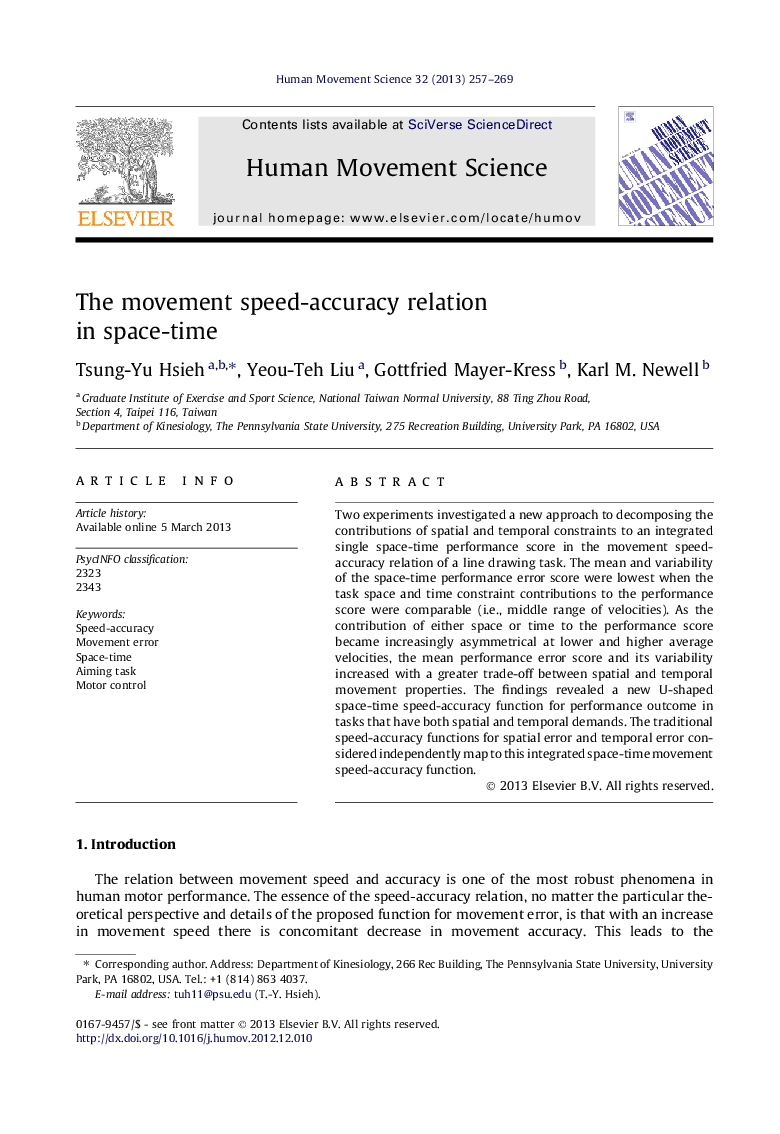| Article ID | Journal | Published Year | Pages | File Type |
|---|---|---|---|---|
| 10459182 | Human Movement Science | 2013 | 13 Pages |
Abstract
Two experiments investigated a new approach to decomposing the contributions of spatial and temporal constraints to an integrated single space-time performance score in the movement speed-accuracy relation of a line drawing task. The mean and variability of the space-time performance error score were lowest when the task space and time constraint contributions to the performance score were comparable (i.e., middle range of velocities). As the contribution of either space or time to the performance score became increasingly asymmetrical at lower and higher average velocities, the mean performance error score and its variability increased with a greater trade-off between spatial and temporal movement properties. The findings revealed a new U-shaped space-time speed-accuracy function for performance outcome in tasks that have both spatial and temporal demands. The traditional speed-accuracy functions for spatial error and temporal error considered independently map to this integrated space-time movement speed-accuracy function.
Keywords
Related Topics
Life Sciences
Neuroscience
Cognitive Neuroscience
Authors
Tsung-Yu Hsieh, Yeou-Teh Liu, Gottfried Mayer-Kress, Karl M. Newell,
